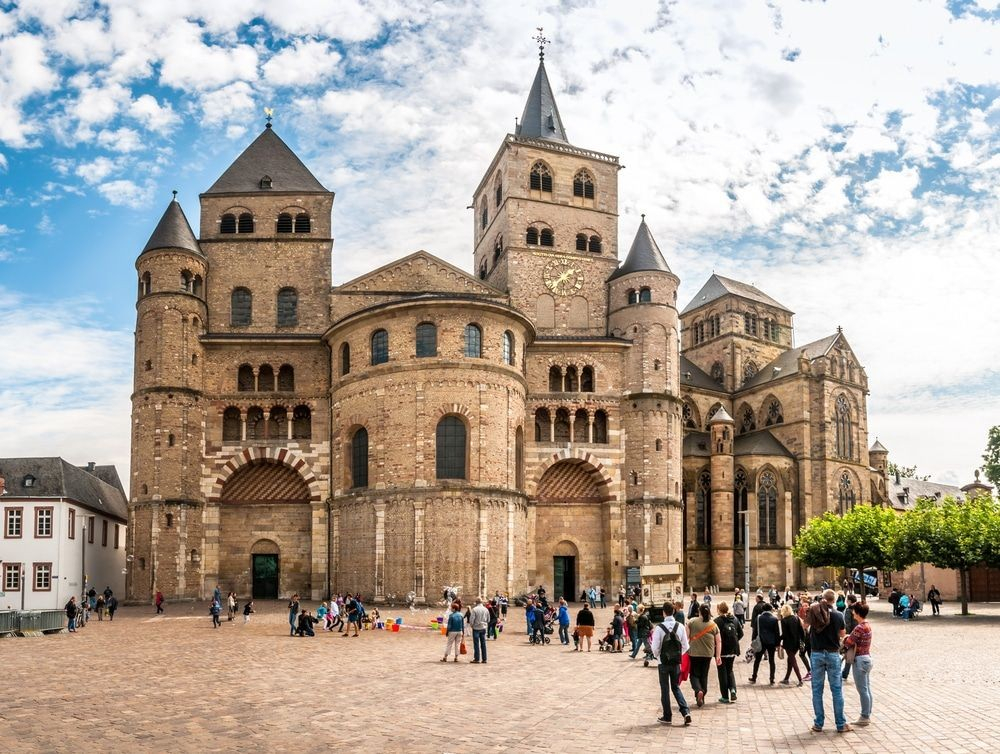Wenn Angst krank macht: Anatomie eines Gefühls Filming Locations
Wenn Angst krank macht: Anatomie eines Gefühls Filming Locations
Paris, France's capital, is a major European city and a global center for art, fashion, gastronomy and culture. Its 19th-century cityscape is crisscrossed by wide boulevards and the River Seine. Beyond such landmarks as the Eiffel Tower and the 12th-century, Gothic Notre-Dame cathedral, the city is known for its cafe culture and designer boutiques along the Rue du Faubourg Saint-Honoré.
Berlin, Germany’s capital, dates to the 13th century. Reminders of the city's turbulent 20th-century history include its Holocaust memorial and the Berlin Wall's graffitied remains. Divided during the Cold War, its 18th-century Brandenburg Gate has become a symbol of reunification. The city's also known for its art scene and modern landmarks like the gold-colored, swoop-roofed Berliner Philharmonie, built in 1963.
Hamburg, a major port city in northern Germany, is connected to the North Sea by the Elbe River. It's crossed by hundreds of canals, and also contains large areas of parkland. Near its core, Inner Alster lake is dotted with boats and surrounded by cafes. The city's central Jungfernstieg boulevard connects the Neustadt (new town) with the Altstadt (old town), home to landmarks like 18th-century St. Michael’s Church.
Göttingen is a German town known for its university. The Old Botanical Garden has a collection of medicinal plants and an arboretum. In the town's rampart-ringed medieval center, the Altes Rathaus is a centuries-old town hall. Outside, stands the Gänseliesel, an iconic fountain topped by a statue of a little girl with a goose. Southeast, the 19th-century Bismarck Tower offers views of the town and surrounding forest.
Würzburg is a city in Germany's Bavaria region. It's known for lavish baroque and rococo architecture, particularly the 18th-century Residenz palace, with ornate rooms, a huge fresco by Venetian artist Tiepolo and an elaborate staircase. Home to numerous wine bars, cellars and wineries, Würzburg is the center of the Franconian wine country, with its distinctive bocksbeutel (bottles with flattened round shapes).
Münster is a city in western Germany. It’s known for the 13th-century St. Paulus Dom cathedral, built in the Gothic and Romanesque styles. Prinzipalmarkt square is framed by gabled houses, the Gothic city hall and late medieval St. Lamberti Church. The gardens of baroque Schloss Münster palace include greenhouses of the Botanical Garden. The Pablo Picasso Art Museum features a collection of the painter’s lithographs.
Munich, Bavaria’s capital, is home to centuries-old buildings and numerous museums. The city is known for its annual Oktoberfest celebration and its beer halls, including the famed Hofbräuhaus, founded in 1589. In the Altstadt (Old Town), central Marienplatz square contains landmarks such as Neo-Gothic Neues Rathaus (town hall), with a popular glockenspiel show that chimes and reenacts stories from the 16th century.
Freiburg im Breisgau, a vibrant university city in southwest Germany’s Black Forest, is known for its temperate climate and reconstructed medieval old town, crisscrossed by picturesque brooks (bächle). In the surrounding highlands, hiking destination Schlossberg hill is linked to Freiburg by a funicular. With a dramatic 116m spire, the Gothic cathedral Freiburg Minster towers over the central square Münsterplatz.
Trier is a southwestern German city in the Moselle wine region, near the Luxembourg border. Founded by the Romans, it contains several well-preserved Roman structures like the Porta Nigra gate, the ruins of Roman baths, an amphitheater just outside the center and a stone bridge over the Moselle River. The Archaeological Museum displays Roman artifacts. Among Trier’s many Catholic churches is Trier Cathedral.
Wenn Angst krank macht: Anatomie eines Gefühls (2019)

